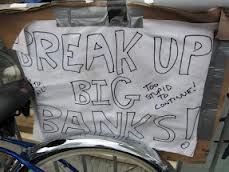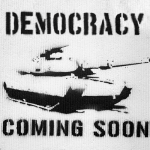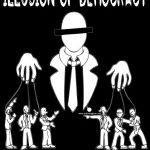 With his chronically gravelly voice and relentlessly liberal agenda, Sherrod Brown seems to have stepped out of “Les Miserables,” hoarse from singing revolutionary anthems at the barricades. Today, Ohio’s senior senator has a project worthy of Victor Hugo — and of conservatives’ support. He wants to break up the biggest banks.
With his chronically gravelly voice and relentlessly liberal agenda, Sherrod Brown seems to have stepped out of “Les Miserables,” hoarse from singing revolutionary anthems at the barricades. Today, Ohio’s senior senator has a project worthy of Victor Hugo — and of conservatives’ support. He wants to break up the biggest banks.
He would advocate this even if he thought such banks would never have a crisis sufficient to threaten the financial system. He believes they are unhealthy for the financial system even when they are healthy. This is because there is a silent subsidy — an unfair competitive advantage relative to community banks — inherent in being deemed by the government, implicitly but clearly, too big to fail.
The Senate has unanimously passed a billoffered by Brown and Sen. David Vitter, a Louisiana Republican, directing the Government Accountability Office to study whether banks with more than $500 billion in assets acquire an “economic benefit” because of their dangerous scale. Is their debt priced favorably because, being TBTF, they are considered especially creditworthy? Brown believes the 20 largest banks pay less when borrowing — 50 to 80 basis points less — than community banks must pay.
In a sense, TBTF began under Ronald Reagan with the 1984 rescue of Continental Illinois, then the seventh-largest bank. In 2011, the four biggest U.S. banks (JPMorgan Chase, Bank of America, Citigroup and Wells Fargo) had 40 percent of all federally insured deposits. Today, the 5,500 community banks have 12 percent of the banking industry’s assets. The 12 banks with $250 billion to $2.3 trillion in assets total 69 percent. The 20 largest banks’ assets total 84.5 percent of the nation’s gross domestic product.
Such banks have become bigger, relative to the economy, since the financial crisis began, and they are not the only economic entities to do so. Last year, the Economist reported that in the past 15 years the combined assets of the 50 largest U.S. companies had risen from around 70 percent of GDP to around 130 percent. And banks are not the only entities designated TBTF because they are “systemically important.” General Motors supposedly required a bailout because a chain of parts suppliers might have failed with it.
But this just means that the pernicious practice of socializing losses while keeping profits private is not quarantined in the financial sector.
To see why TBTF also can mean TBTM — too big to manage — read “What’s Inside America’s Banks?” in the January/February issue of the Atlantic. Frank Partnoy and Jesse Eisinger argue that banks are not only bigger but also “more opaque than ever.” And regulations partake of the opacity: The landmark Glass-Steagall Act of 1933, separating commercial banking from investment banking, was 37 pages long; the 848 pages of the 2010 Dodd-Frank law may eventually be supplemented by 30 times that many pages of rules. The “Volcker rule” banning banks from speculating with federally insured deposits is298 pages long.
There is no convincing consensus about a correlation between a bank’s size and supposed efficiencies of scale, and any efficiencies must be weighed against management inefficiencies associated with complexity and opacity. Thirty or so years ago, Brown says, seven of the world’s 10 largest banks were Japanese, which was not an advantage sufficient to prevent Japan’s descent into prolonged stagnation. And he says that when Standard Oil was broken up in 1911, the parts of it became, cumulatively, more valuable than the unified corporation had been.
Brown is fond of the maxim that “banking should be boring.” He suspects that within the organizational sprawl of the biggest banks, there is too much excitement. Clever people with the high spirits and adrenaline addictions of fighter pilots continue to develop exotic financial instruments and transactions unknown even in other parts of the sprawl. He is undecided about whether the proper metric for identifying a bank as “too big” should be if its assets are a certain percentage of GDP — he suggests 2 percent to 4 percent — or simply the size of its assets (Richard Fisher, president of the Federal Reserve Bank of Dallas, has suggested $100 billion).
By breaking up the biggest banks, conservatives will not be putting asunder what the free market has joined together. Government nurtured these behemoths by weaving an improvident safety net and by practicing crony capitalism. Dismantling them would be a blow against government that has become too big not to fail. Aux barricades!
Autor:
source: washingtonpost.com












Adauga comentariu